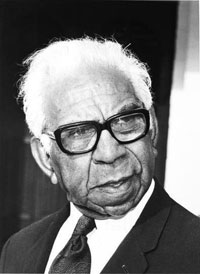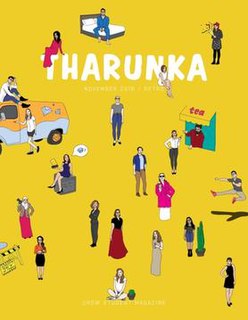Related Research Articles

The Advertiser is a daily tabloid format newspaper published in the city of Adelaide, South Australia. First published as a broadsheet named The South Australian Advertiser on 12 July 1858, it is currently a tabloid printed from Monday to Saturday. The Advertiser came under the ownership of Keith Murdoch in the 1950s, and the full ownership of Rupert Murdoch in 1987. It is now a publication of News Corp Australia. Through much of the 20th century, The Advertiser was Adelaide's morning broadsheet, The News the afternoon tabloid, with The Sunday Mail covering weekend sport, and Messenger Newspapers community news. The head office was relocated from a former premises in King William Street, to a new News Corp office complex, known as Keith Murdoch House at 31 Waymouth Street.

Daisy May Bates, CBE was an Irish-Australian journalist, welfare worker and lifelong student of Australian Aboriginal culture and society. Some Aboriginal people referred to Bates by the courtesy name Kabbarli "grandmother."

Gerringong is a town located about ten minutes drive south of Kiama in the Illawarra region of New South Wales, Australia in the Municipality of Kiama. At the 2016 census, Gerringong had a population of 3,966. One theory says that the name derives from an Aboriginal word meaning "fearful place".

The Myall Creek massacre was the killing of at least twenty-eight unarmed Indigenous Australians by twelve colonists on 10 June 1838 at the Myall Creek near the Gwydir River, in northern New South Wales. After two trials, seven of the twelve colonists were found guilty of murder and hanged, a verdict which sparked extreme controversy within New South Welsh settler society. One—the leader and free settler John Fleming—evaded arrest and was never tried. Four were never retried following the not guilty verdict of the first trial.

Sir Douglas Ralph Nicholls, was a prominent Aboriginal Australian from the Yorta Yorta people. He was a professional athlete, Churches of Christ pastor and church planter, ceremonial officer and a pioneering campaigner for reconciliation.

Yarrabah, traditionally Yagaljida in the Yidin language spoken by the indigenous Yidinji people, is a coastal town and locality in the Aboriginal Shire of Yarrabah, Queensland, Australia. It is an Aboriginal community about 53 kilometres (33 mi) by road from Cairns CBD on Cape Grafton. It is much closer by direct-line distance but is separated from Cairns CBD by the Murray Prior Range and Trinity Inlet, an inlet of the Coral Sea. At the 2016 census, Yarrabah had a population of 2,559.

Pearl Mary Gibbs (Gambanyi) was an Indigenous Australian activist, and the most prominent female activist within the Aboriginal movement in the early 20th century. She was a member of the Aborigines Progressive Association (APA), and was involved with various protest events such as the 1938 Day of Mourning. She has strong associations with activists Jessie Street and Faith Bandler.

Tharunka is a student magazine published at the University of New South Wales in Sydney, Australia. Established in 1953 at the then New South Wales University of Technology, Tharunka has been published in a variety of forms by various student organisations. At present, Tharunka is published 8 times a year by Arc @ UNSW Limited. The name Tharunka means "message stick" in a Central Australian Aboriginal language.

Gnowangerup is a town located 61 kilometres (38 mi) south-east of Katanning in the Great Southern region of Western Australia.
The office of the Protector of Aborigines was established pursuant to a recommendation contained in the Report of the Parliamentary Select Committee on Aboriginal Tribes, of the House of Commons. On 31 January 1838, Lord Glenelg, Secretary of State for War and the Colonies sent Governor Gipps the report. The office of Chief Protector of Aborigines was established in some states, and in Queensland the title was Protector of Aboriginals.

Cummeragunja Reserve or Cummeragunja Station, alternatively spelt Coomeroogunja, Coomeragunja, Cumeroogunga and Cummerguja, was a settlement on the New South Wales side of the Murray River, on the Victorian border near Barmah. It was also referred to as Cumeroogunga Mission, although it was not run by missionaries. The people were mostly Yorta Yorta.

Matthew Moorhouse was an English pioneer in Australia, pastoralist, politician, and Protector of Aborigines in South Australia. He was in charge of the armed party that murdered 30-40 Maraura people, which may have included women and children, now known as the Rufus River massacre.
Walkabout was an Australian illustrated magazine published from 1934 to 1974 combining cultural, geographic, and scientific content with travel literature. Initially a travel magazine, in its forty-year run it featured a popular mix of articles by travellers, officials, residents, journalists, naturalists, anthropologists and novelists, illustrated by Australian photojournalists. Its title derived from the supposed ‘racial characteristic of the Australian aboriginal who is always on the move".
Charles Duguid was a Scottish-born medical practitioner, social reformer, Presbyterian lay leader and Aboriginal rights campaigner who lived in Adelaide, South Australia for most of his adult life, and recorded his experience working among the Aboriginal Australians in a number of books. He founded the Ernabella mission station in the far north of South Australia. The Pitjantjatjara people gave him the honorific Tjilpi, meaning "respected old man". He and his wife Phyllis Duguid, also an Aboriginal rights campaigner as well as women's rights activist, led much of the work on improving the lives of Aboriginal people in South Australia in the mid-twentieth century.

Glencoe is a town in South Australia, Australia, located 27 kilometres (17 mi) north-west of Mount Gambier. At June 2016, Glencoe had an estimated population of 661.

The Australasian Chronicle was a twice-weekly Catholic newspaper published in Sydney, New South Wales, Australia. It was published in a broadsheet format. It was also published as The Morning Chronicle, The Chronicle and The Sydney Chronicle. It was the first Catholic newspaper published in Australia.

The Sale Football Netball Club, nicknamed the Magpies, is an Australian rules football and netball club based in Sale, Victoria and are based at the Sale Oval.
The Coolbaroo League was a Western Australian aboriginal social club. Newspaper reports in the 1950s frequently provided the translation of the name as Magpie.

Maloga Aboriginal Mission Station also known as Maloga Mission or Mologa Mission was established about 15 miles from the township of Moama, on the banks of the Murray River in New South Wales, Australia. It was on the edge of an extensive forest reserve. Maloga Mission was a private venture established by Daniel Matthews, a Christian missionary and school teacher, and his brother William. The mission station operated intermittently in 1874, becoming permanent in 1876. The Mission closed in 1888, after dissatisfied residents moved about 5 miles (8.0 km) upriver to Cummeragunja Reserve, with all of the buildings being re-built there.
References
- ↑ "Newspaper For Aborigines". The Sydney Morning Herald (36, 181). New South Wales, Australia. 7 December 1953. p. 7. Retrieved 20 April 2016– via National Library of Australia.
- ↑ "Aborigines' Newspaper In West". Recorder (14, 159). South Australia. 18 January 1954. p. 1. Retrieved 21 April 2016– via National Library of Australia.
- ↑ Westralian Aborigine, Paterson Brokensha, 1954, retrieved 13 December 2015 Noting that the NLA catalogue is referring to microfilmed copies from January 1954 to July 1957
- ↑ "Coolbaroo League | Kaartdijin Noongar". www.noongarculture.org.au.
- ↑ "Trove - Archived webpage". Trove.
- ↑ Rose, Michael; Rose, Michael, 1954- (1996), For the record : 160 years of Aboriginal print journalism, Allen & Unwin, ISBN 978-1-86448-058-0 CS1 maint: multiple names: authors list (link) chapter 3 - 3. Transitional voices: Westralian Aborigine
- ↑ Coolbaroo League (1950), Westralian Aborigine, Coolbaroo League, retrieved 10 December 2015